#suehiro maruo online
Text




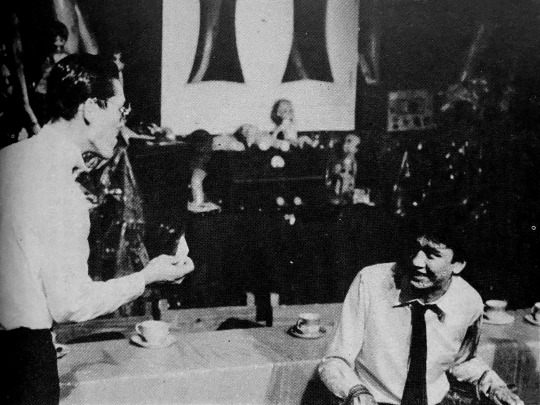

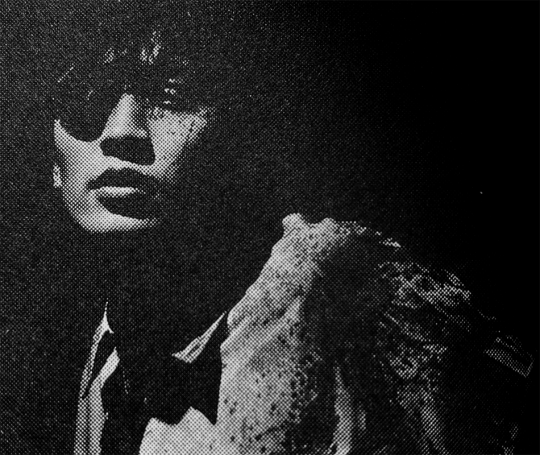
Photos from the Tokyo Grand Guignol stage play Galatia Teito Monogatari, based loosely on the Teito Monogatari serial of epic dark sci fi occult horror books. Despite sharing its basis with a greatly influential series which spawned several films (the first Teito Monogatari adaption even featuring special effects designed by H.R. Giger) and a set of animated horror films, Galatia remains the most obscure of the Tokyo Grand Guignol’s productions. Very sparse information of its contents exist online. On one specific page I found a month back, a (very poorly translated) English synopsis describes the play as being a story about a machine that destroys a major city in Japan. It’s unclear if the machine they’re referring to is in reference to a humanoid robot or a more generalized weapon. It’s said that in the play, Kyusaku Shimada appears as a mad scientist who creates the oxygen destroyer from Godzilla (1954). In a description of the ending, the finale depicts a scenario where the character Yasunori Katō (a demon that manifests itself as an imperial army First Lieutenant) welcomes one of the characters to what he refers to as the “new imperial city”. He reveals to the character a supernatural landscape where various children’s toys and dolls across the stage come to life and move around on their own, all to the sounds of marching drums and claps of thunder. All images were digitized by yours truly, with the sources being volume 28 of Yaso magazine and the Suehiro Maruo-focused magazine Only You, which features a digest version of Galatia’s screenplay. Of course, with the screenplay (or at least a condensed version of it) in my possession, I plan to translate it to English some way or another down the line.
This adaption would help start off Shimada’s professional acting career, with Shimada having his first major cinematic role as Yasunori Katō in the film Tokyo: The Last Megalopolis. As mentioned though, Shimada doesn’t act as Katō in the Tokyo Grand Guignol version. That role was instead designated to Yaguruma Kennosuke, who would later appear as Raizou in the original performances of Lychee Hikari Club.

Yaguruma Kennosuke as Raizou in Lychee's December 1985 performance, apprehending the Marquis de Maruo (performed by Suehiro Maruo) when he enters the Hikari Club's hideout. Kennosuke is on the right side of Maruo, with Hiroyuki Tsunekawa (Zera) standing aside Kennosuke with his bag of lychee fruits.
As a side note, you've gotta appreciate how despite then being well into a Maruo-flavored era of underground culture, there are still the occasional callbacks to Terayama's legacy, hence the clock that Katō is seen holding in the first photo.
#norimizu ameya#tokyo grand guignol#teito monogatari#lychee light club#litchi hikari club#suehiro maruo
321 notes
·
View notes
Text
Intro post yee yee
Cuz a mutual/online friend made one and I had the urge to copy them like I do w everyone

My name is Emma, and I go by they/she (experimenting w pronouns here :3)
I feel like I got no gender but at the same time I strongly identify with being a woman so idk if that makes me nb, a demi-girl, or if I’m just a cis chick being weird
Like my bio says I’m a minor so idk why tf people with “Minors DNI” in their bios r following me like u r literally breaking the rules of ur own blog
I am a very complicated bisexual. I like both boys and girls but unfortunately against my will I have a strong preference for men 🥲 like I always have a strong romantic attraction to men but struggle when it comes to women. Like women r hot but a lot of the time I feel more sexually connected to them, I almost ALWAYS both romantically and sexually attracted to men, but I’ve had very few girl crushes I actually feel romantically connected to. Like literally I’ve recently connected the dots that I’ve always been into women, I just was attracted to them sexually (let’s just say I was horny since I was a literal toddler despite not having a mere clue as to what it was BUT LETS NOT TALK ABOUT THAT), so that’s why my attraction to women seemed to come out of nowhere when I hit puberty
Adults can follow and interact just don’t be a weird pedo
Conservatives, nazis, pedos, and members of the American feelings yakuza can fuck off
I’m an irl Jirai Kei who doesn’t have access to the fashion and also wants to be a Sweet Lolita, with a little bit of Gyaru and Decora in the mix, I also have a goth/emo/alt side if that makes sense
I’m a ex-christian, semi-atheist, artist, writer, novice pianist, cat enjoyer, choir kid who’s slowly descending into a theatre kid and history nerd who loves all things cute and dark :P
My fav:
Movies:
• Shoujo Tsubaki (obvs if u followed me for a while)
• Indiana Jones
• The Mummy (Justice for Imhotep/the mummy he did nothing wrong he just wanted to rizz his girl up)
TV shows:
• Litchi de Hikari Club
• Wednesday
Books:
• Litchi Hikari Club
• Killing Stalking
Music:
• The Hamilton soundtrack
• Anything VOCALOID
Other pieces of media:
• Phantom Manor, Haunted Mansion, Big Thunder Mountain Railroad, the whole SEA shebang
• Sanrio
• Artwork made by Suehiro Maruo, Junji Ito, or Usumaru Furuya
Okay that’s it now ciao
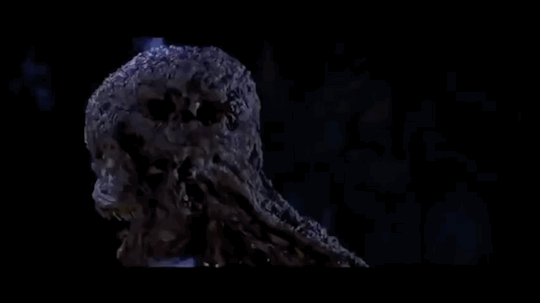
6 notes
·
View notes
Text

Time to show off how much stuff I have bought this time and it’s gonna overflow my stand !! This time I have Brought 3 volumes of Tin Tin, I have been not buying anything recently, well anything book related, so I went and kinda over did a bit !!

The Many Deaths of Laila Starr a must have !! one the best comics of 2021 !! if you didn’t read this, well you are missing out !!

More Dandadan, Because only the high quality stuff get on this stand !!

Deathco that over here is called Deathdisco, I saw that they only release only up to vol 4 yet !!

A Book! an actual book, Blood Meredian, I have heard this book cited away to often this pass few days and plus a youtuber I like made a 9 hour review like readthrough, so yeah ! i guess I should read this !!

And for last, Suehiro Maruo Paronama Island, the one the few of his works that I have yet to read, because I could never find this online when I wanted, but here it is on physical form and translated in portugues as well !! I do hope this publisher get The Laughing Vampire in here as well some day !!!
4 notes
·
View notes
Text
What is the origin of Ahegao memes?
The hentai face (also known as the ahegao face) is a popular topic of discussion among anime fans. As a result, ahegao memes have gone incredibly widespread on the internet. So, what is the origin of ahegao? How did it go viral? Let’s all find out with ilovepauljack.com.
What is ahegao?
Ahegao is a drawing genre in Japanese Hentai comics, in which the person (mainly female) is showing, during sexual intercourse, an intense amount of pleasure showed by her facial expression.
Ahegao is defined in several blogs and online user-created dictionaries’ articles, which list these features below.
Rolled-up Eyes
Stuck-out Tongue
Got wet with tears, snot, drool or semen or other body fluids
Flushed Face
Extremely strange moans: eg. Nhoooh! , Aheee!, Iguuh!, etc…
Ahegao memes
Where does the word ahegao come from?
In the name, “Ahe” stems from Japanese onomatopoeia of “Aheahe” describing female’s flushed breath and moaning in sex & her sexual excitement, and “Gao” means “Face”. According to a forum article in Nico Nico Pedia’s entry for Ahegao, it’s confirmed that the term had come already used in porn magazines to simply explain porn actresses’ face with pleasure in early 1990s. Used in the same context, it also made looks on a handful of posts in 2channel and its sister board community in adult contents BBSPINK as well as descriptions for porn videos on adult e-commerce pages in the first half of 2000s. The oldest 2channel post in existence which includes this term was posted to a thread in /company/ (tip-off) in November 4th, 2001.
Meanwhile, according to 2008-2009 Japanese blog posts WebLab.ota’s “Ahegao History” & “Ahegao Chronology” , and Himajin no Dabun’s “Chronological Analyze of The Ahegao form in Adult Games”, it was around 2003-2005 that some hentai manga & anime creators began introducing extremely exaggerated face depictions of women’s abnormal orgasms with unwanted sexual intercourse, hardcore BDSMs, rapes or other sex assaults. Another blog aritcle by Bar Rikashitsu no Bibouroku suggested that Japanese ero guro mangaka/painter Suehiro Maruo has already introduced this kind of depiction to his works in early 1980s.
Continuing these prior researches on the web, Japanese bishoujo comic researcher Rito Kimi included “Genealogy of Ahegao” in his 2017 book The Expression History of Ero-Manga. At this book, he points Hiromitsu Takeda’s 2008 manga “I

Scraper” is that first commercial work where a character utters the word “Ahegao” in the meaning of this facial expression , and it suggests Ahegao had established its personal concept in the hentai subculture at that point. He also analyses the image board communities Futaba Channel (2chan) and Pixiv, where its users started to highly use this technique for pure jokes like Ahegaokin around 2007, also had the critical role to spread the concept on the internet.
Ahegao in nowaday’s meaning was formed by increase and evolution of this drawing style in that middle of 2000s, and its spreading to the otaku community via 2chan, 2channel/BBSPINK that became to host Ahegao-themed threads around the middle of 2007, and matome weblogs reprinting threads in those online communities. And in around 2008, it had adequate spread to be recognized as one of famous drawing techniques for climax. The first Ahegao-themed doujin comic anthology “A-H-E” was released in the winter in that year.
Ahegao comic AHE
Related: Confused anime boy Is this a pigeon memes – The interesting story you need to know
The spread of ahegao memes
Against the backdrop of the large popularity in the otaku group, which had been developed in the late-2000s, Ahegao has earned a lots of on-screen visibility as both a hentai art technique and fodder for parody illustrations. At its early days, Ahegao had been a popular style in the Collage tradition in 2chan and 2channel. And Japanese illustrators communities Pixiv and Nico Nico’’’ Seiga which were launched in the same period have been popular Ahgao-sharing services from its beginning. As of June 2017, Pixiv holds over 20000 illustrations tagged involved Ahegao, and Nico Nico Seiga, which doesn’t have the adult section, also had plenty of illustrations featuring the face.
On the Westerners Web, this specific facial expression is called in not only the original name, but also translated types “Fucked Silly Face” or “Mind Break Face”. Tagged under these names, loads of Ahegao illustrations have been drawn by DeviantArt users, or reprinted to Tumblr & Danbooru. Urban Disctonary’s article and Reddit’s subreddit Ahegao were launched in June’’ 2010. Besides, Instagram’s hashtag also has tons of Ahegao selfies by female otakus & cosplayers.
Readmore: Anime traps meme – What is it?
Some famous ahegao memes on the internet
Ahegaokin
Ahegaokin is a series of exploitables for the face. Started from an illustration which was inspired by 2chan’s Ahegao photoshopped image of Suiseiseki in Rozen Maiden, lots of illustrations of characters being infected by the bacillus was uploaded to Pixiv in 2008-2009.
Ahegaokin meme
Desu Desu
Desu Desu is a derivative from Desu meme and an Advice Dog spin-off which reused that Suiseiseki’s Ahegao face. As early as April 2010, this series became to be shared in Meme Generator.
Desu Desu
Ahegao Double Peace
As well as the face itself, its descendant Ahegao Double Peace is also one the iconic poses in the hentai subculture & online parody illustrations. This quite weird pose had established its concept at the middle of 2011.
Ahegao Double Peace meme
So, have you gotten all of the information about ahegao memes? We hope that the above article is helpful to you. Share it with your anime-obsessed friends so that they could understand more about the mentioned topic.
If you’re looking for Anime memes, Dank memes, and Pet memes , ilovepauljack.com is the place to be.
The post What is the origin of Ahegao memes? appeared first on Happiness is handmade with Paul's Memes.
source https://ilovepauljack.com/anime-memes/ahegao-memes
4 notes
·
View notes
Text
Doss anyone have scans from suehiro maruo's laughing vampire with the original Japanese text? Cant find it anywhere online except for a few pages here and there....
1 note
·
View note
Note
Is your Hiroko Nagata piece your own art or some of her artwork?
That’s a piece by Suehiro Maruo from “The New Atrocities in Blood” which is a book that features lots of his artwork, as well as artwork from Kazuichi Hanawa .Here is a link to read it online. CW: Gore, Sexual Abuse.https://yande.re/pool/show/753Here is a some more about it.https://www.goodreads.com/book/show/5330546-bloody-ukiyo-e-in-1866-1988
3 notes
·
View notes
Text
FEATURE: The 6 Best Books On The History Of Manga And Anime
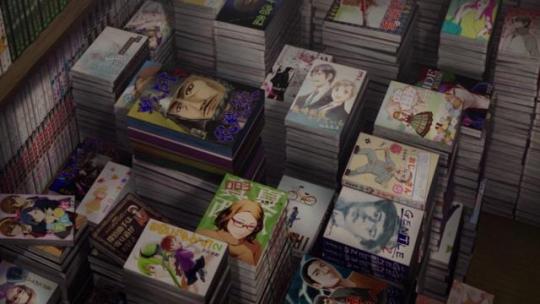
Say you’re a fan of anime and manga who’s looking to learn more about history or craft. Where do you begin? There’s whatever insight you can glean from the work itself, of course. There’s also a good amount of information available online, from animation blogs to translated manga interviews to personal pieces. But when all else fails, turn to the library. Here are some excellent nonfiction books on the manga and anime industry that I’d recommend to just about anybody. I’ve also read at least sections of every book on this list, so you have my guarantee of their quality!
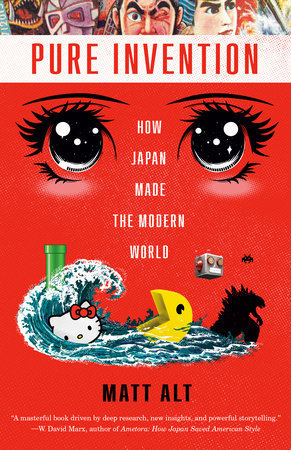
Image via Penguin Random House
Pure Invention: How Japan's Pop Culture Conquered the World reaches beyond manga and anime to encompass Japanese pop culture post World War II. But there are plenty of stories in here that fans of anime and manga might find fascinating:
The toy car that inspired top developers at Nintendo
How the karaoke machine led directly to idol culture, as music producers sought to produce music that ordinary people could sing
The manga-obsessed student radicals of the 1960s, many of whom came to work on later anime projects like Mobile Suit Gundam
Author Matt Alt’s choice of interviewees and attention to detail marks Pure Invention as one of the best of its kind. If you’re a curious reader looking for an accessible (and recent!) popular history, I highly recommend this book.

Image via Bloomsbury.com
For fans abroad, the history of anime begins with the airing of Osamu Tezuka’s Astro Boy on Japanese television. But this wasn’t enough for Jonathan Clements, a long-time anime and manga scholar who continues to blog on Schoolgirl Milky Crisis. His academic text Anime: A History begins in the 1910s, 50 years before the airing of Astro Boy, in fact, Astro Boy only appears halfway through the book! Clements is concerned not just with the medium of anime itself, but the cultural traditions, historical events, and individual people that brought it into existence.
One of the greatest obstacles standing in the way of English-speakers seeking to understand the history of Japanese animation — besides, as Clements notes, the haphazard nature of even those resources available in Japanese — is the language barrier. Online writers at sites such as Sakugablog have done fantastic work in making some of this information accessible, but those same writers would be the first to acknowledge there’s still plenty we don’t know. Anime: A History synthesizes countless Japanese-language source texts and interviews about the history of animation, yet Clements is careful to acknowledge that the testimony of individual actors within the industry must be weighed against both their own agenda and the words of others. While Anime: A History would be a valuable text if it was nothing more than a synthesis, Clements’ ambition to build a coherent history of Japanese animation from a production standpoint that thoroughly examines its subject matter and context from all angles is what makes it essential.

Image via Stone Bridge Press
Jonathan Clements collaborated with equally prestigious anime and manga scholar Helen McCarthy to produce The Anime Encyclopedia, whose third edition was published in 2015. It’s an enormous text (over a thousand pages long!) that covers everything from summaries and critical appraisals of popular titles to specific themes and tropes to nuggets of cultural history and influence. If I were to criticize this project, I would say that recent anime writing outside the United States exposes The Anime Encyclopedia’s biases; for instance, the magical girl series Ojamajo Doremi only merits a few paragraphs despite its status as a beloved children's series in Japan. Keeping that in mind, it’s an impressive resource that is great fun to browse (and to disagree with)!

Image via j-novel club
Mari Okada is one of the most prolific and influential anime writers of the past decade. She’s worked on adaptations, original projects like Anohana: The Flower We Saw That Day and KIZNAIVER, and even directed her own films. In her memoir, From Truant to Anime Screenwriter, Okada frankly discusses her personal struggles: her fraught relationship with her mother, her years as a young student when she couldn’t bring herself to attend class, and the process by which she gathered her courage to touch upon her personal experiences in her work. There are chapters of this book that wouldn’t be out of place in an Okada-written drama, which I suppose is the point.
Okada’s memoir is in part a testament to her work ethic and her willingness to tackle any challenge no matter how difficult or annoying it is. But it’s also a rosetta stone for her work: not just in how it overlaps with her personal life, but in its emphasis on the importance of communication despite how difficult it can be to voice even simple feelings. Whether you’re a fan of Okada or not, I found this to be a great resource for writers nervous of the fraught boundary between fiction and personal experience or for readers who want to know what makes Okada’s work so distinct.
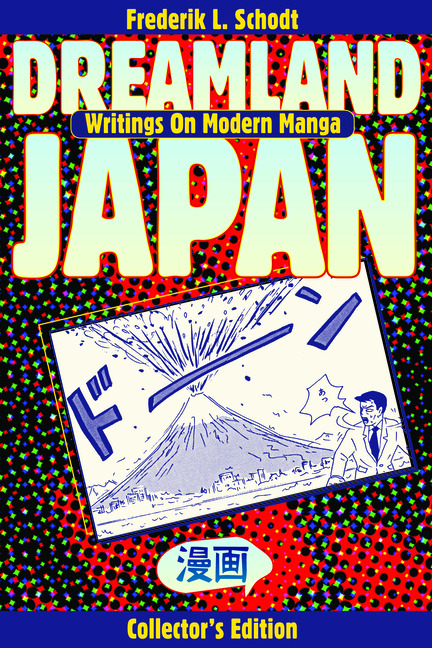
Image via Stone Bridge Press
Frederik Schodt is one of manga criticism’s greatest elder statesmen. His book Manga! Manga! put him on the map, not only for its editorial content but also for its translated excerpts of Japanese comics — including what would be, for years, the only available English chapter of Rose of Versailles! Yet that book was published in 1983 and sections can’t help but read as dated now. So I’m recommending the sequel here, 1996’s Dreamland Japan.
Like its predecessor, much of Dreamland Japan is devoted to detailing Schodt’s theories as to what manga is and how it works. But the sections of the book I personally find most valuable are the profiles where Schodt writes at length about specific manga artists he either personally enjoys or believes to embody a specific genre unique to manga. The freakish kitsch of Suehiro Maruo; Ryoko Yamagishi’s historical epic Hi Izuru Tokoro no Tenshi (Emperor of the Land of the Rising Sun); and alternative artists like Kazuichi Hanawa and Shungicu Uchida. These chapters stand as a stark reminder that despite the recent popularity of manga in the United States, many fantastic comics remain completely unknown to most English-speaking audiences.
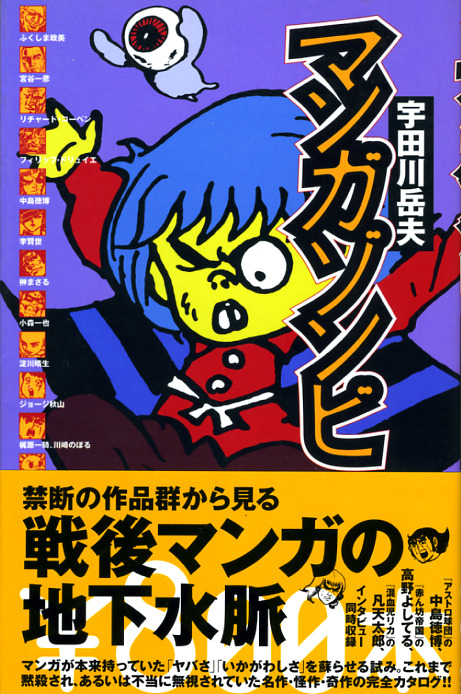
Image via ComiPress
Finally, there’s Udagawa Takeo’s Manga Zombie! Translated into English by John Gallagher, it’s an eccentric and rewarding text that profiles several avant-garde manga artists from the ‘60s and ‘70s. Udagawa strongly dislikes the market-driven manga hits that would go on to rule the world from the pages of Shonen Jump and fights instead for the careers of authors whose work was published in the pages of pornographic magazines as often as they were in Jump or the alternative magazine Garo. Most of these authors have never been published in English, whether officially or through illicit means like scanlations. If not for the translation of Manga Zombie — or for Udagawa’s further works of manga scholarship — the artists he writes about might vanish into history without leaving a trace.
The comics detailed in Manga Zombie can be grotesque, ranging from the “fleshbomb style” of artists like Masaru Sakaki to prescient weirdos like George Takiyama. Some might be repelled by the content here; personally, I’m disappointed by the lack of female comics artists featured, although Udagawa (who mentions the girls comic pioneers the 49ers in the foreword to his book) is certainly aware of them. But I love reading folks talking about their favorite work that I’ve never heard about, and Udagawa makes for an idiosyncratic tour guide to some truly unique material. For those willing to brave the world of Japanese exploitation comics, Manga Zombie is a hidden gem.
What’s your favorite text about manga or anime? Is there an interview you consider especially interesting? Let us know in the comments!

Adam W is a Features Writer at Crunchyroll. When he isn't reading weird fantasy novels and horror fiction, he sporadically contributes with a loose coalition of friends to a blog called Isn't it Electrifying? You can find him on Twitter at: @wendeego
Do you love writing? Do you love anime? If you have an idea for a feature, pitch it to Crunchyroll Features!
By: Adam Wescott
1 note
·
View note
Photo

Poses inspired in equal parts by too much Suehiro Maruo art, Un Chien Andalou, and the line 「闇が広がる人は何も見えない」。
The comics in the EphebOphelia cycle are all linked not only by a name that's dripping in puns (there's at least three) but also by this weird orgy of sexuality, queerness (especially and specifically transness), darkness, art, aesthetic, and the tragedy (ha! punny!) of youth, whether that be its brevity in some respects and its longevity in others (such as appearance in a negative manner) or its pubertal recurrence for those who take hormones and get to re-live the worst of middle and high school in adulthood (and/or the looming threat of that possibility.)
Another of my diary comics, which I will eventually collect in a book as I make more. A few that I decide to share, I will post online. Others will be book exclusive.
These comics will be based on experiences and thoughts I’ve had regarding life, and its many struggles, including those of gender, sex, mental illness, and everything in between. I am hard on myself both as a protective measure (life can’t hurt you if you beat it to the punch) and as a result of my mental issues. As a result, the language is and often will be blunt, aggressive, shocking, and sometimes painful; similarly, my humor is often dry, self-deprecating, and dark. I write the way I speak and definitely the way I speak to myself which is not often nice.
While some things may be embellished, simplified, or exaggerated for the comic medium, there is always a truth to them for that snapshot of time.
#LGBT WEBCOMIC#LGBT WEBCOMICS#TRANS WEBCOMIC#DIARY COMIC#autobio comics#diary comics#kmclaudeart#kmclaude#art#comics#comic
106 notes
·
View notes
Text
Might post some more Suehiro Maruo scans too if people are interested in that. I was doing them a little a year or two ago, but grew lazy with it. Different versions usually have minor differences, so that's always fun to compare.
I won't scan every page, but maybe a few more interesting ones that aren't really online.
Assuming that people mostly follow me for Suehiro Maruo and eroguro in general.
10 notes
·
View notes
Text
[L'arte fallocentrica di Ishikawa Jiro (石川 次郎)](https://blog.becomix.me/larte-fallocentrica-di-ishikawa-jiro-%e7%9f%b3%e5%b7%9d-%e6%ac%a1%e9%83%8e/ "https://blog.becomix.me/larte-fallocentrica-di-ishikawa-jiro-%e7%9f%b3%e5%b7%9d-%e6%ac%a1%e9%83%8e/")
Jiro Ishikawa nasce a Tokyo nel 1967, nel quartiere di Shinagawa, e subito dopo si trasferisce sulla piccola isola Sakaté con la famiglia, vicino a Toba, Prefettura di Mie (non lontano da Nagoya). A 14 anni si ritrova tra le mani per la prima volta un numero di GARO Magazine, rivista fondata nel 1964 dal 41enne Katsuichi Nagai assieme a Sampei Shirato. L’incontro fortuito con le opere di autori come Suehiro Maruo, Shigeru Mizuki, Yoshihiro Tatsumi, Yoshiharu Tsuge e Takashi Nemoto lo affascinano a tal punto da spingerlo verso il mondo del fumetto. A 18 anni ritorna quindi a Tokyo per intraprendere la strada che lo porterà a diventare un mangaka, ma il suo debutto come tale avverrà solo nel 1987 con la sua prima storia, Bird Man, pubblicata proprio su GARO e successivamente inserita in un volume di raccolta intitolato “Miin of Jiro-chan” pubblicato nel 1989. Negli anni successivi l’autore cade in una grave depressione (affrontata con una terapia farmacologica) che influenza inesorabilmente anche le sue opere fino a portarlo quasi all’abbandono del proprio lavoro nel 1993, nel pieno della bolla speculativa che aveva colpito l’intero Giappone.
Fino al 2009 rimane intrappolato in un circolo vizioso di autocommiserazione in cui emergono le sue ossessioni (per lo più inerenti la sfera sessuale e la geometria), autoproducendo lavori brevi appoggiandosi alla libreria Tako Ché (nel quartiere di Nakano) con la quale pubblica la raccolta intitolata Giro. Dal 2014 ad oggi inizia la sua “rinascita” grazie al nuovo filone creativo collegato agli animali ed agli impegni in Francia. Partecipa infatti alle mostre Mangaro a Marsiglia, Heta-uma a Sète (nei pressi di Montpellier) e France Invasion a Montpellier. Realizza la locandina del festival FOFF 2016 di Angoulême, viene pubblicato l’albo C’est Comme ça da Éditions Matière nel 2017 e il recente Atomic Love da Les Requins Marteaux a gennaio 2019 (collana BD Cul).
L’autore denuncia un decadimento personale, ma anche lo smarrimento culturale della società moderna. Nasce di conseguenza un mondo psichedelico, fatto di istinti animali supportati da allucinazioni dispersive e sintetiche. In C’est Comme ça si racchiude tutto il suo mondo fallocentrico, dove il raggiungimento dell’orgasmo è l’unico scopo della giornata, della vita stessa, sinonimo di compiutezza e di estasi ancestrale. Il culmine viene raffigurato da stelle e pianeti che trascendono il corpo per immergersi nello spazio profondo, incuranti di ciò che circonda il corpo terreno.
L’evoluzione del tratto (sempre più geometrico) che l’autore propone è evidente confrontando le tavole del 1987 con quelle dei racconti più recenti, come lo è l’interferenza data dal suo passato burrascoso per quanto riguarda i contenuti. I toni ironici vengono in parte abbandonati o mescolati ad elementi sempre più surreali, sintetizzati perfettamente nel personaggio di Chinkoman (l’uomo pene). Un individuo che tiene saldamente in pugno il suo organo genitale, fonte di sicurezza che ricorda concettualmente la tanto celebre coperta di Linus van Pelt (dai Peanuts di Schulz) rendendolo il centro del proprio universo.
Jiro Ishikawa rimane attualmente inedito in Italia, i suoi volumi disponibili in francese grazie a Éditions Matière e Les Requins Marteaux sono di facile reperibilità online e comprensione per la presenza di pochi baloon con testo molto semplice. Atomic Love, sua ultima fatica, è praticamente muto e racchiude la sua più concentrata e sintetica definizione della sessualità geometrica che lo contraddistingue.
L'originale è stato pubblicato su [https://blog.becomix.me/larte-fallocentrica-di-ishikawa-jiro-%e7%9f%b3%e5%b7%9d-%e6%ac%a1%e9%83%8e/](https://blog.becomix.me/larte-fallocentrica-di-ishikawa-jiro-%e7%9f%b3%e5%b7%9d-%e6%ac%a1%e9%83%8e/ "Permalink")
original post
0 notes
Photo



Images have been released online from the stage play of The Laughing Vampire (Warau Kyuuketsuki) which opened up today, 28th of December, at the Osaka Business Park
Adapted from the manga by Maruo Suehiro, the plot follows a young boy (teen in the play) who has been resurrected as a vampire, though almost mad with hunger frenzy due to his new senses
As he rampages through the city, his mind slowly mending, he encounters those rich in power, wealth and influence who use their privilege to get away with abuse, torture and killing for fun, which leads the young vampire to wonder: Which is the real horror? The vampire who kills in order to feed himself or the crawling disease hidden in society, which slowy corrupts without being noticed?
To see more, follow this link: https://natalie.mu/comic/gallery/news/263334/841635
1 note
·
View note